INTRODUCTION
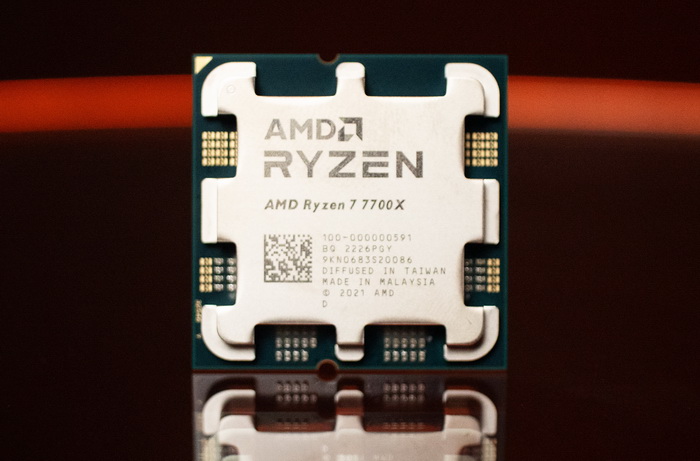
Regardless of whether you're an AMD or Intel fan competition between these two leading CPU manufacturers has always been a good thing, both in terms of pricing/costs and technological advancements. This has been particularly true for the past decade or so with AMD and Intel frequently exchanging spots as the one with the fastest gaming CPU (primarily based on single core performance). Two years ago, AMD unveiled their 5000 Series of Ryzen Zen 3 architecture CPUs which Intel successfully countered with their 12th generation of Core CPUs shortly after. As expected, AMD had already started working on a new series of desktop CPUs and so it was just a matter of time before they also countered back. Well, that day is now and so I'll be starting my coverage of the brand new 7000 Series Zen 4 CPUs by AMD with the Ryzen 7 7700X.
For more than 50 years AMD has driven innovation in high-performance computing, graphics and visualization technologies. Billions of people, leading Fortune 500 businesses and cutting-edge scientific research institutions around the world rely on AMD technology daily to improve how they live, work and play. AMD employees are focused on building leadership high-performance and adaptive products that push the boundaries of what is possible.
Alongside the Ryzen 7 7700X which this review is all about today we also see the launch of the Ryzen 7 7600X, Ryzen 9 7900X and Ryzen 7 7950X (review here) AM5 (Codename Raphael) models with which AMD aims to win over gamers and professionals alike. According to AMD the new Ryzen 7000 Series (Zen 4) which is based on the LGA1718 socket boasts an +13% increase in instructions per cycle/clock (IPC) together with an increase of up to 800MHz in core clocks both of which translate to a single core performance boost of up to +29% compared to the previous 5000 Series (Zen 3) generation. Performance is not the only thing AMD has moved forward at however, power consumption has also been dramatically improved/reduced since Zen 4 CCDs (Core Complex Dies - 70mm2 size - 6.5 billion transistors) have moved to an 5nm process (6nm for the I/O Die - 122mm2 size - 3.4 billion transistors) resulting in a very appealing 40% average gain in performance-per-watt (AMD Eco Mode also allows you to manually reduce the TDP of the CPU via the BIOS or their Master software). The entire Ryzen 7000 line (Zen 4) also sports integrated RDNA2 graphics which sport 2 compute units, 4 Asynchronous Compute Engines (ACE) and 1 Hardware Scheduler (HWS) with support for both HDMI v2.1 (HFR/48Gbps FRL/DSC/HDR10+/VRR) and DisplayPort v2.0 (Adaptive Sync/DSC/UHBR10/HDR) outputs. AMD has also further tweaked their infinity fabric technology and so now instead of the 1:1:1 approach (FCLK/UCLK/MCLK) of the previous 5000 Series (Zen 3) the new 7000 Series (Zen 4) uses an auto:1:1 approach meaning that it keeps the memory controller with the RAM at an 1:1 ratio whereas Infinity Fabric is set between 1600-2000MHz. This ensures optimal cooperation between the new Zen 4 CPUs and DDR5 RAM, especially low-latency modules following the EXPO memory certification by AMD. The EXPO technology by AMD is similar to XMP but aside being licence and royalty free it's also optimized for the new Zen 4 CPU line (up to 11% gains in gaming). As for the Ryzen 7 7700X CPU this is an 8 core, 16 thread model with a maximum TDP of 105W (142W max socket power), 4.5GHz base clock, 5.4GHz max boost clock and a TjMax of 95 degrees Celsius (L2 cache is set at 8x1MB whereas L3 cache is set at 32MB). Time to see what AMD has been working on with their latest Zen 4 desktop CPUs.
SPECIFICATIONS AND FEATURES
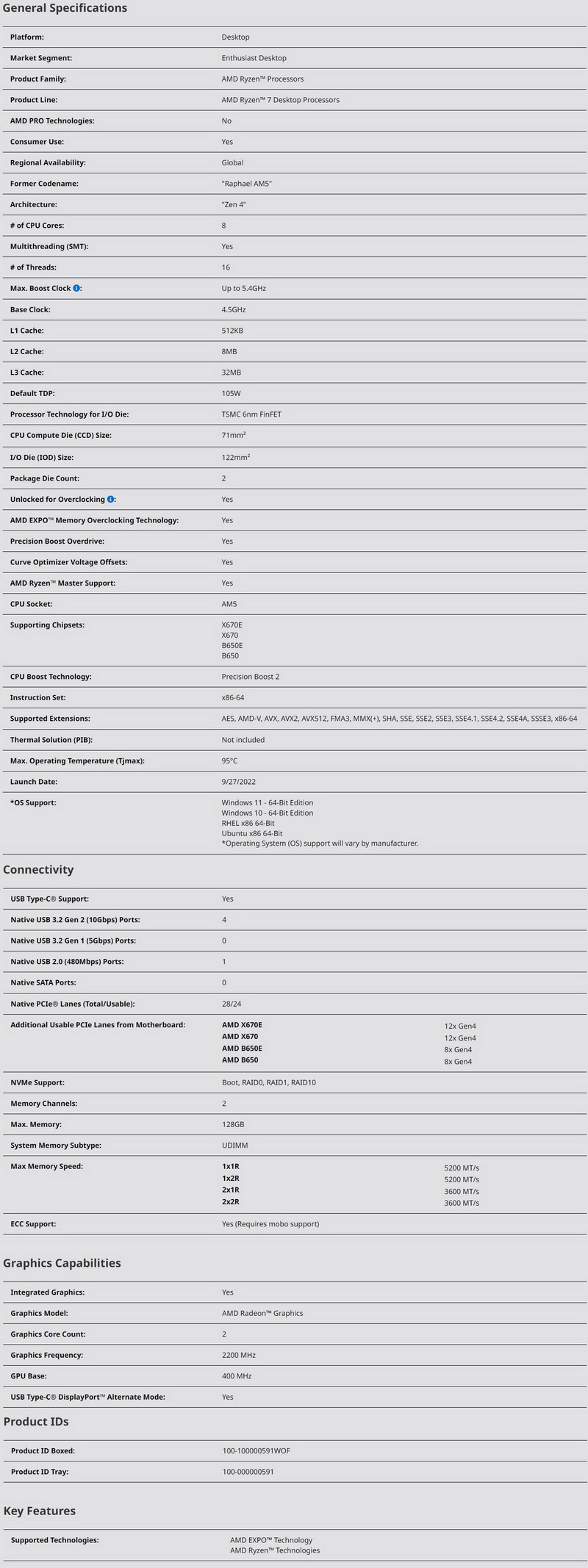
PACKAGING AND CONTENTS
The boxed version of the Ryzen 7 7700X features a small orange and brown box that has an opening at the front from where you can see the top of the CPU (lid).
A few words about the CPU and the 3-year limited warranty are printed at the rear.
Inside the box you'll find the 7000 Series Ryzen 7 7700X, case sticker and the installation instructions.
THE RYZEN 7 7700X
I don't really know why AMD chose to use such a shape for the lid of their 7000 Series CPUs but i like it.
When i first saw this design i was curious as to whether or not thermal paste would fall into these gaps (it didn't, at least not during my tests).
AMD has finally moved away from having the pins on/beneath their CPUs and has adopted the same design as Intel (and yes, that's a very good thing).
Here you can see an exposed view (de-lidded) of a 7000 Series CPU.
For testing the 7000 Series Ryzen 7 7700X I'll be using the X670E TAICHI motherboard by ASRock (review soon).
As you can all see the AM5 socket is virtually identical to the AM4 one so most CPU coolers in the market are probably already compatible (had no problem using the Celsius+ S36 Prisma with its AM4 bracket).
For this test I’ll also be using the EXPO compatible Trident Z5 Neo DDR5 32GB 6000MHz CL30 kit by GSkill and the NFP425 2TB M.2 NVMe Gen 4 SSD by Neo Forza.
The HOF GeForce RTX 3080 Ti OC Labs Edition is here to complete the system.
TEST BED
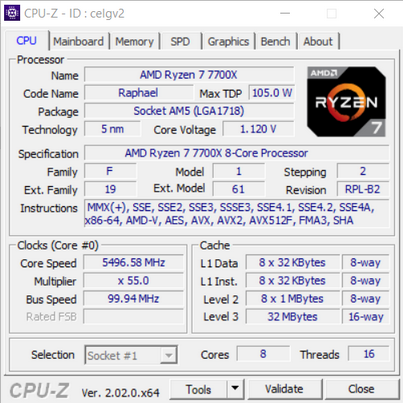

TESTING METHODOLOGY
To accurately test the performance of a CPU its clocks need to be set manually to a specific frequency/speed so to that end every model in my charts will be pushed near the maximum boost clock possible according to each manufacturer. I'll also try to use the same clocks and the same hardware configuration (motherboard, drive, memory, graphics card, cooler and power supply - even the same thermal paste will be used) when testing CPU models from the same series and as for operating system since till this day Windows 10 is still far more popular among consumers than Windows 11 I’ll be using a fresh Windows 10 Pro installation fully updated up to the day i begin my tests. Needless to say, the latest bios and drivers will be installed prior to recording my results.
As for the tests themselves they include the latest versions of both popular synthetic benchmarks and games. For synthetic benchmarks I’ll be using UL 3DMark Professional (Time Spy & CPU Profile), Maxon Cinebench, CPUID CPU-Z, Passmark Performance Test, Sisoftware Sandra Titanium and ASUS RealBench and as for games I’ll be using Horizon Zero Dawn Complete Edition by Guerrilla Games, F1 2022 by Codemasters and Forza Horizon 5 by Xbox Game Studios (time spy and games will be run at 1080p resolution with max settings). Each test will be repeated a total of 3 times and then the average numbers will get recorded in the charts. Also, since I’m positive many consumers and professionals alike would like to know I’ll also be using AIDA64 (stability test), CPU-Z (stress test) and HWMonitor to record the minimum and maximum temperatures and power consumption both at idle and after 5 minutes of heavy stress load (needless to say the cooler used will be set at 100% speed/performance – these results are only valid for the set clocks, if boost clocks climb even higher you can expect higher power consumption and temperatures).
TEST RESULTS - 3DMARK / CINEBENCH
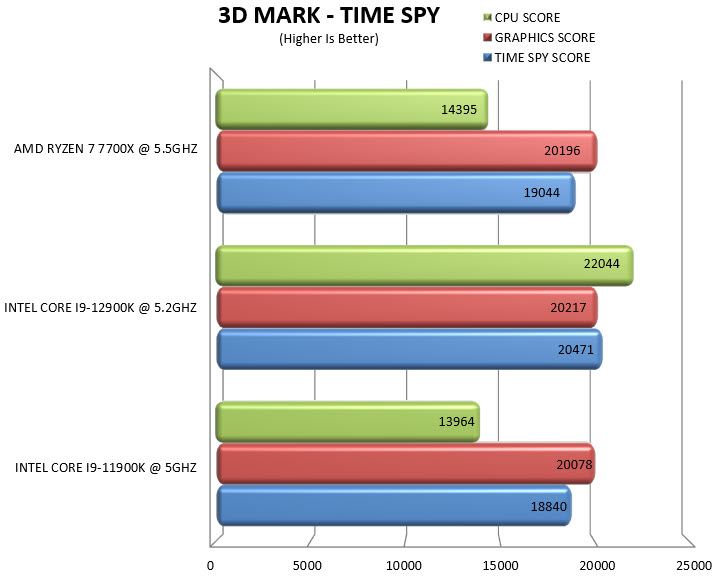
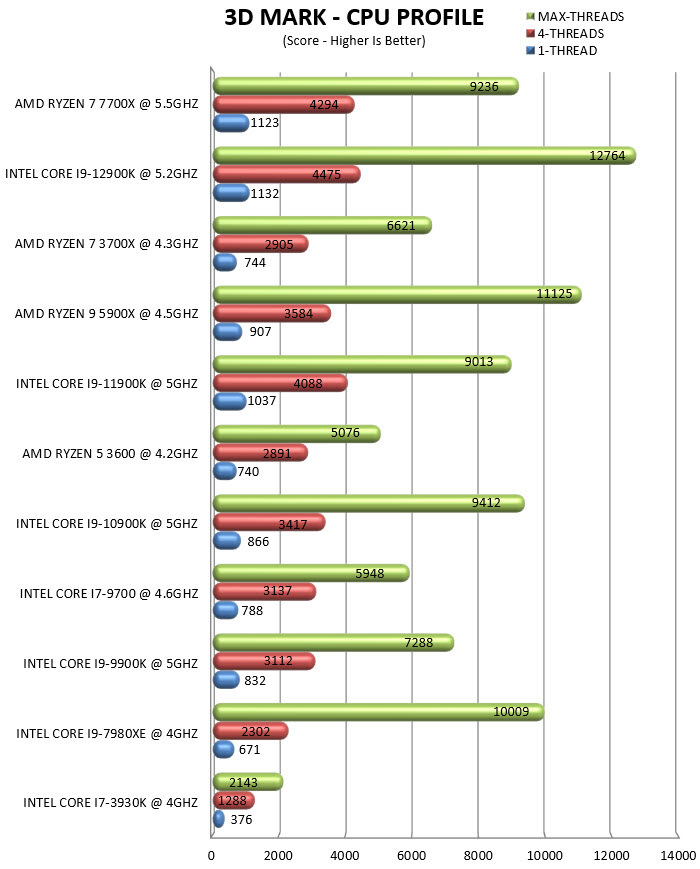
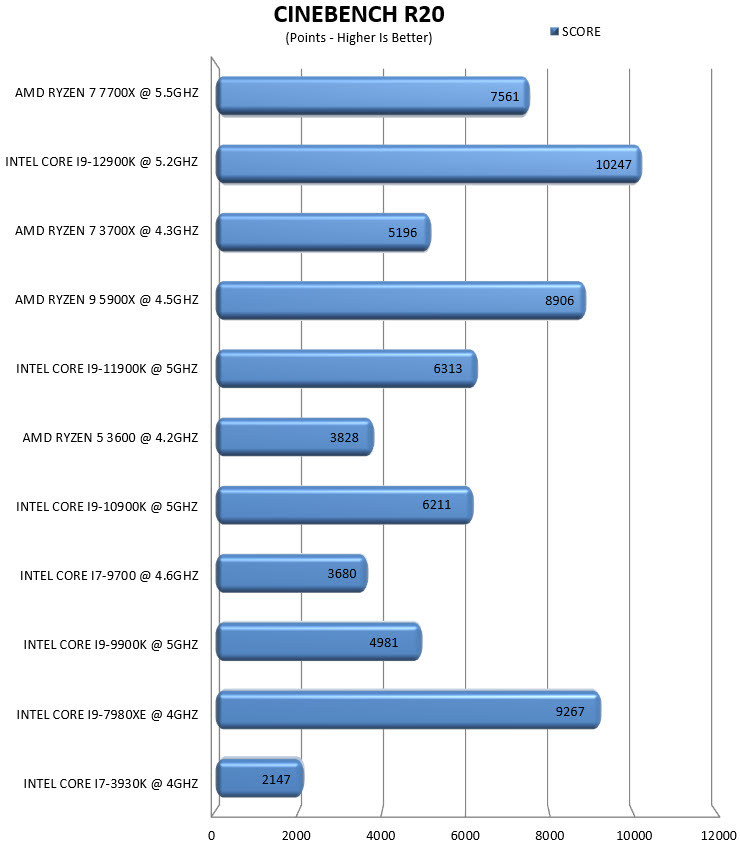
TEST RESULTS - CPUZ / PERFORMANCE TEST

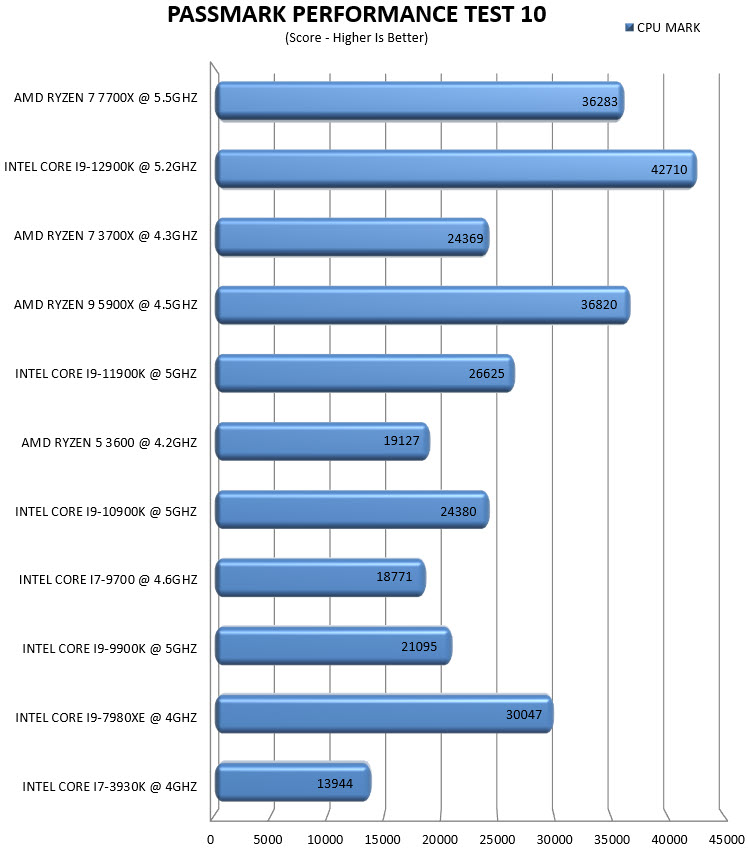
TEST RESULTS - SANDRA TITANIUM / REALBENCH


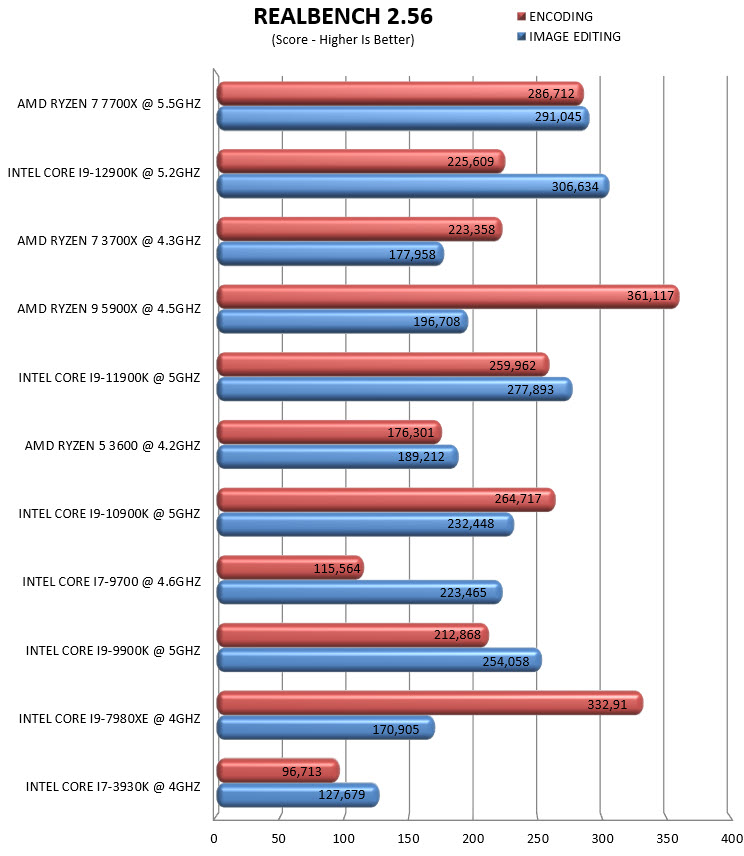
TEST RESULTS - HORIZON ZERO DAWN COMPLETE EDITION / F1 2022 / FORZA HORIZON 5

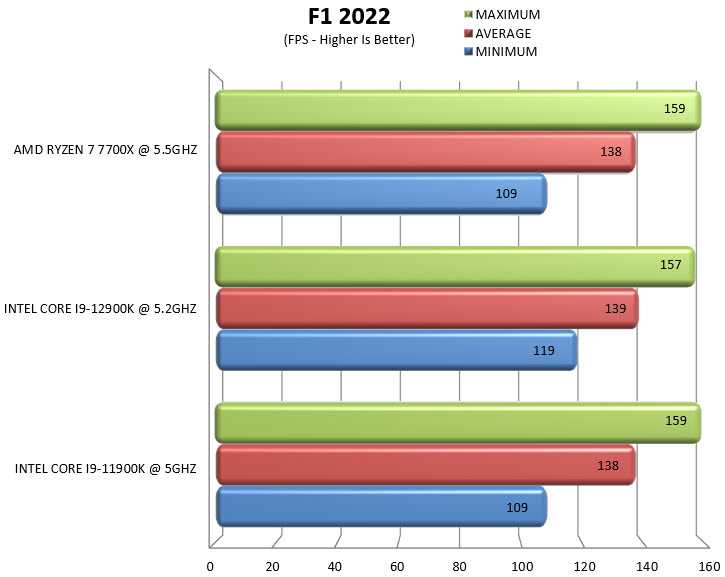

TEST RESULTS - TEMPERATURES / POWER CONSUMPTION


CONCLUSION
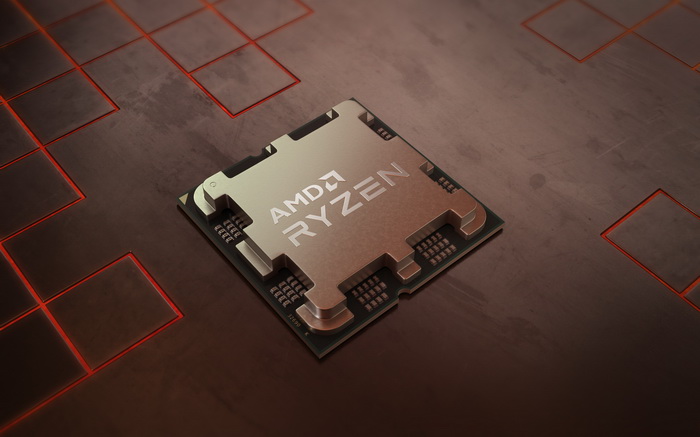
Before i move to my final thoughts about the new Zen 4 Ryzen 7 7700X CPU by AMD i feel that since this is my very 1st “dedicated” CPU review i need to address one thing, clocks/frequencies. As I’ve stated numerous times already in both my motherboard and RAM reviews my goal has always been to provide results with settings/clocks most users out there will be able to use 24/7, I’m a reviewer after all and not an overclocker. It’s also a fact that especially lately CPUs are pushed to their limits from the manufacturers themselves and since thermals are also something i take into account i just don’t feel there’s a significant enough reason for me to push them even further. With that out of the way the Ryzen 7 7700X actually surprised me quite a bit with its performance. Not only was it able to easily take on and clearly surpass the Core I9-11900K CPU by Intel (previous generation flagship model) but in a couple of tests, it even managed to take on the latest gen Core I9-12900K CPU. You can also very easily climb up to 5500MHz by manual overclock (max boost clock recorded out of curiosity was 5549MHz) and that’s a significant improvement compared to even the previous 5000 Series. On top of that power consumption and even temperatures are both at very good levels compared to previous generations (both by AMD and Intel) so kudos to AMD for releasing an all-around high-performance model (and since this is an X7XX model probably for the masses at that). By introducing the new EXPO profile AMD has also boosted the compatibility and performance of their new 7000 Series CPUs. The GSkill RAM kit for example with its low CAS latency of 30 worked extremely well with the X670E TAICHI motherboard by ASRock (as did the motherboard itself, will be posting complete reviews for both soon) and the new infinity fabric setup by AMD. Unfortunately, out of the three games i chose to use for my benchmarks F1 2022 seems to be capped since the three CPUs i decided to use (keep in mind that the Core I9-12900K was tested with the same GSkill RAM kit as the Ryzen 7 7700X) perform almost identically (if that’s the case and it can’t be resolved i will replace that game with another before my next CPU review).
The 7000 Series Zen 4 CPUs by AMD will be made widely available tomorrow and so currently i can only share their MSRP (manufacturer suggested retail price) for the Ryzen 7 7700X which is set at a very appealing USD399/399Euros. If there’s a single drawback with the Ryzen 7 7700X is the launch of Intel’s 13th generation I5-13600K/KF models in about a month from now which will be priced for roughly the same and feature a total of 14 cores (10 big and 4 small ones) with 20 threads. Still regardless of the number of cores i don’t expect this to be a serious hit for the Ryzen 7 7700X, always based on the early specifications listed online. At the end of the day the latest Ryzen 7 7700X processor by AMD is a powerful 8-core model aimed towards demanding users and gamers alike and for that it clearly deserves the Platinum Award.

PROS
- Excellent Performance (8 Cores / 16 Threads)
- Top Boost Clock (5500MHz+)
- EXPO DDR5 RAM (Low Latencies / Compatibility)
- Temperatures (Thermals) / Power Consumption (TDP)
- Integrated RDNA 2 Radeon Graphics
- Ryzen Master Software (Overclocking / Reduced Power Consumption)
- Pin Less Design
- AM5 Socket (Same As AM4)
- Price (For Some)
CONS
- Imminent Launch Of Intel’s 13th Gen CPUs

 O-Sense
O-Sense





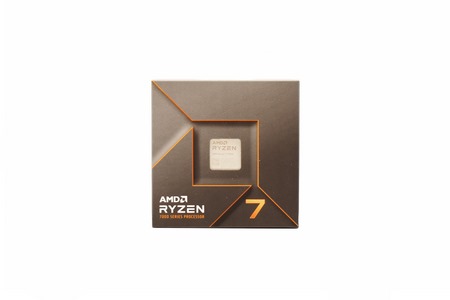

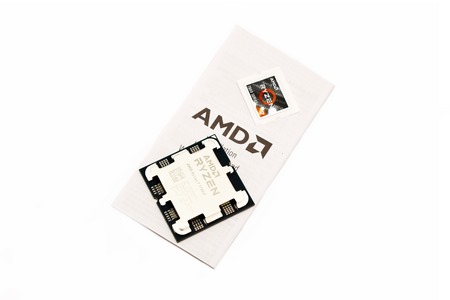
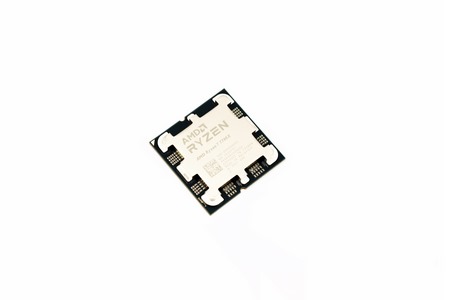
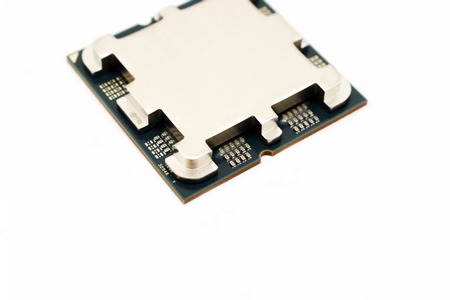

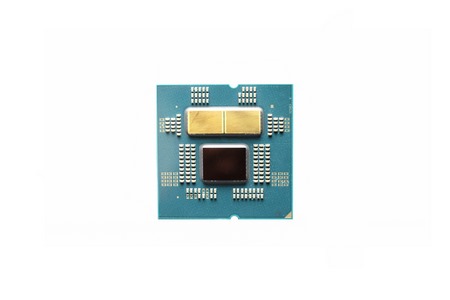



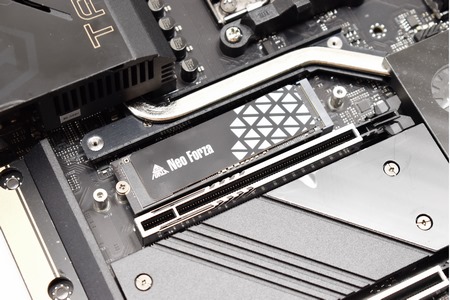
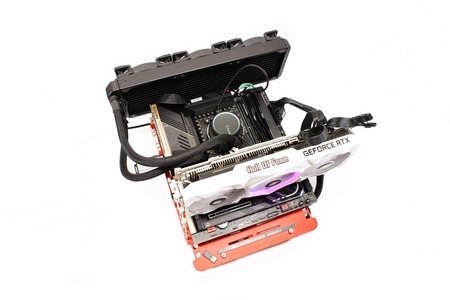
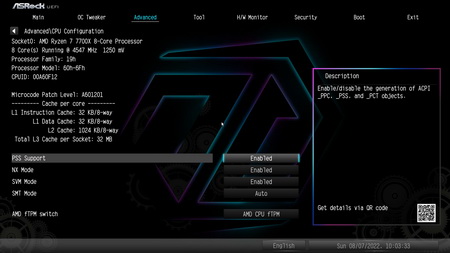


.png)

